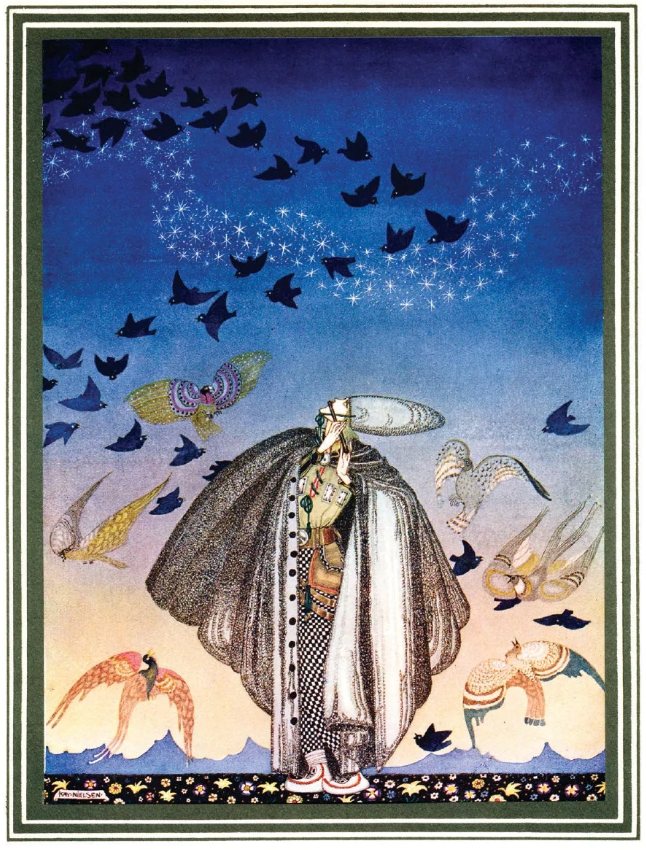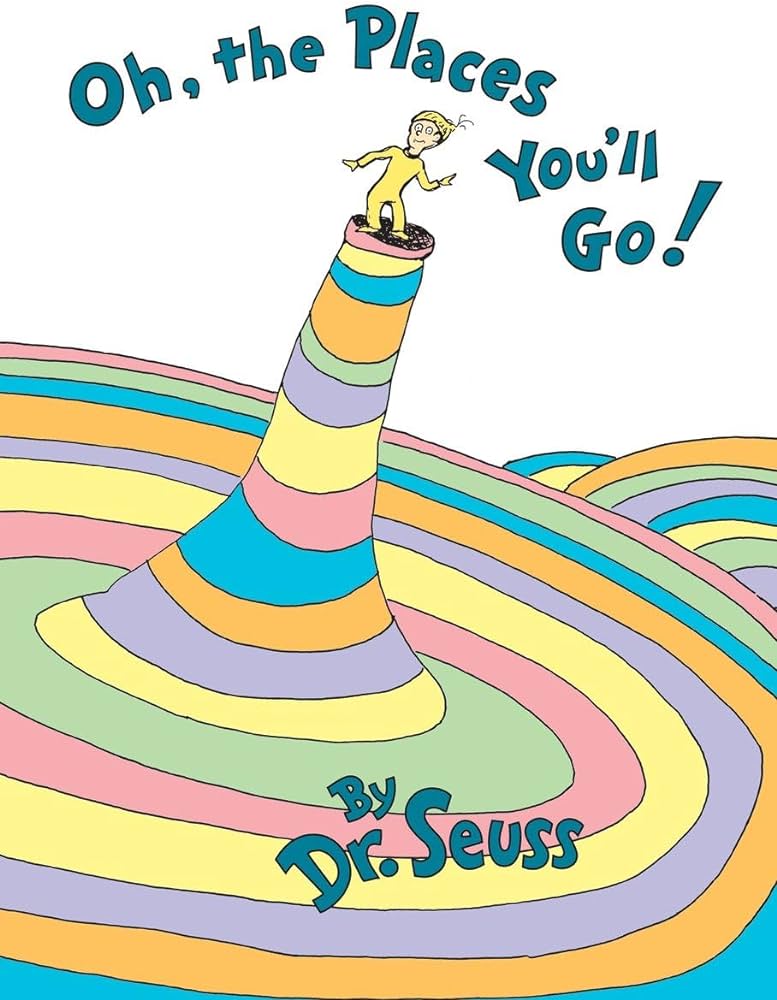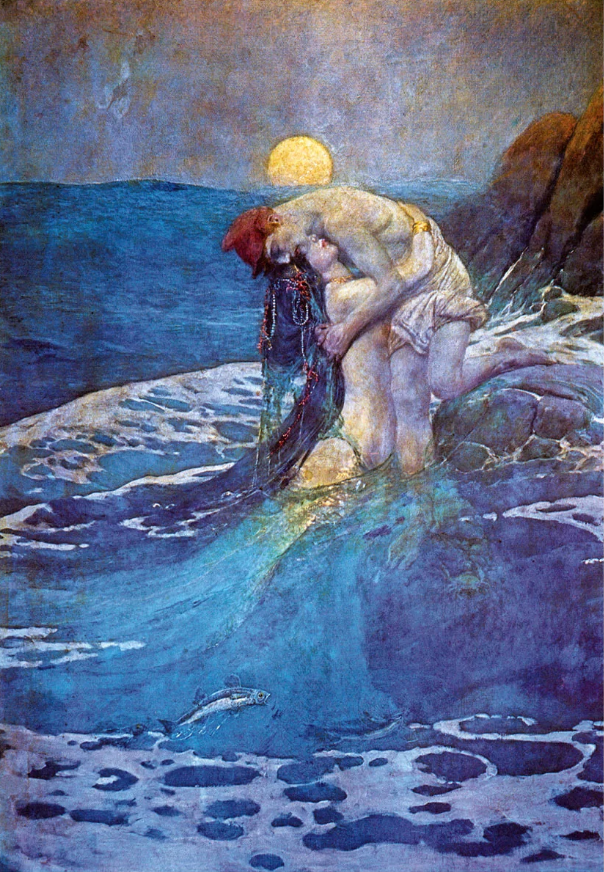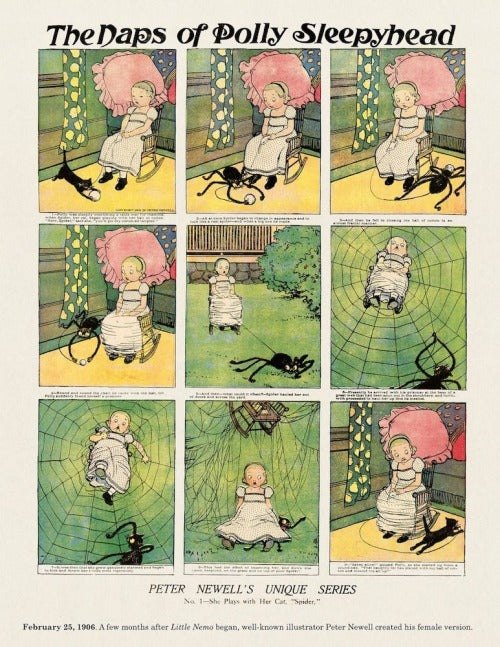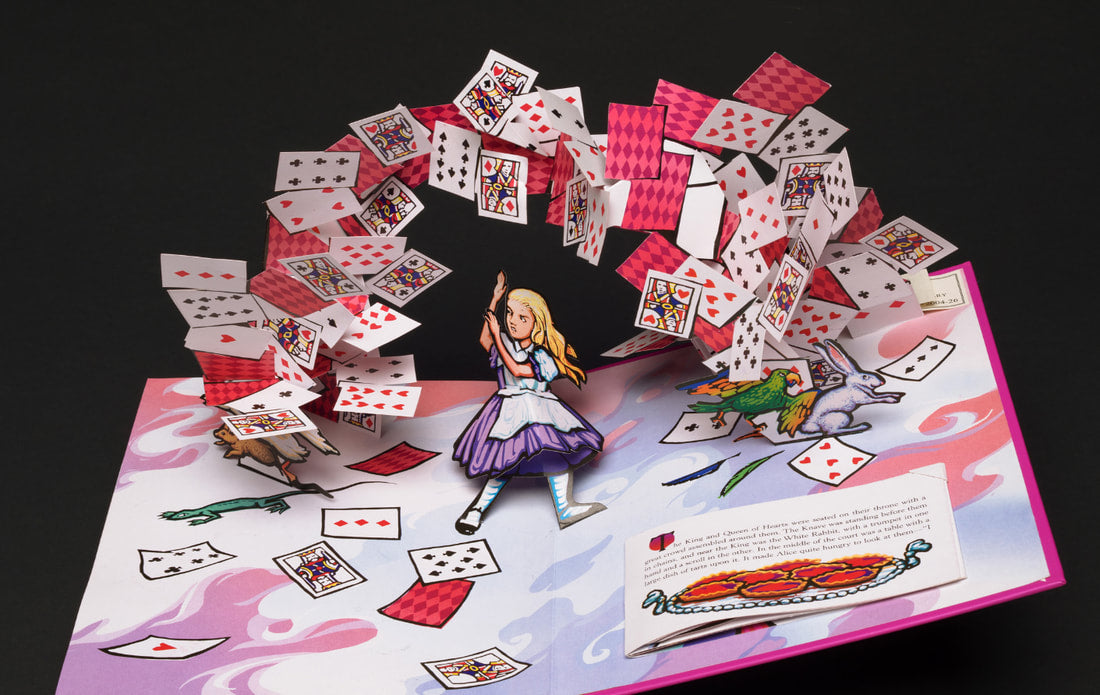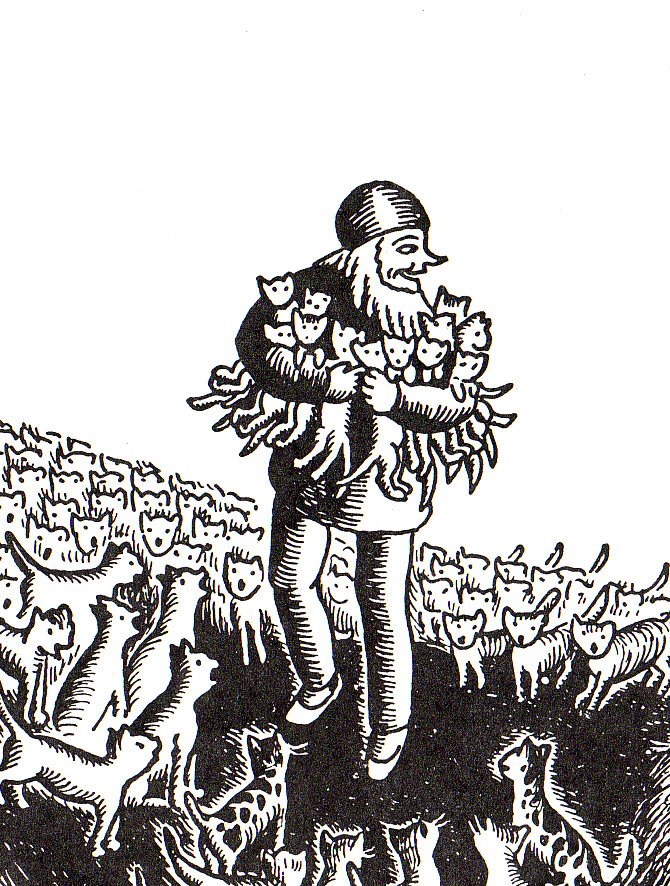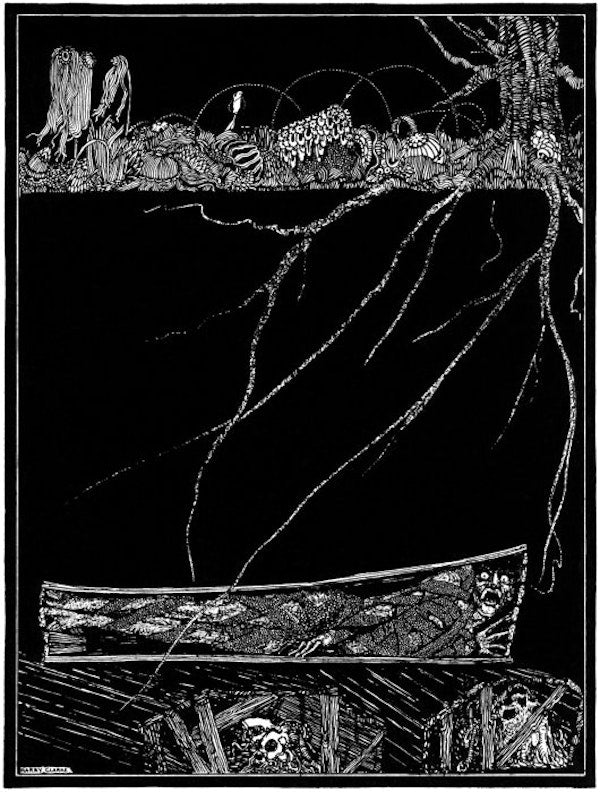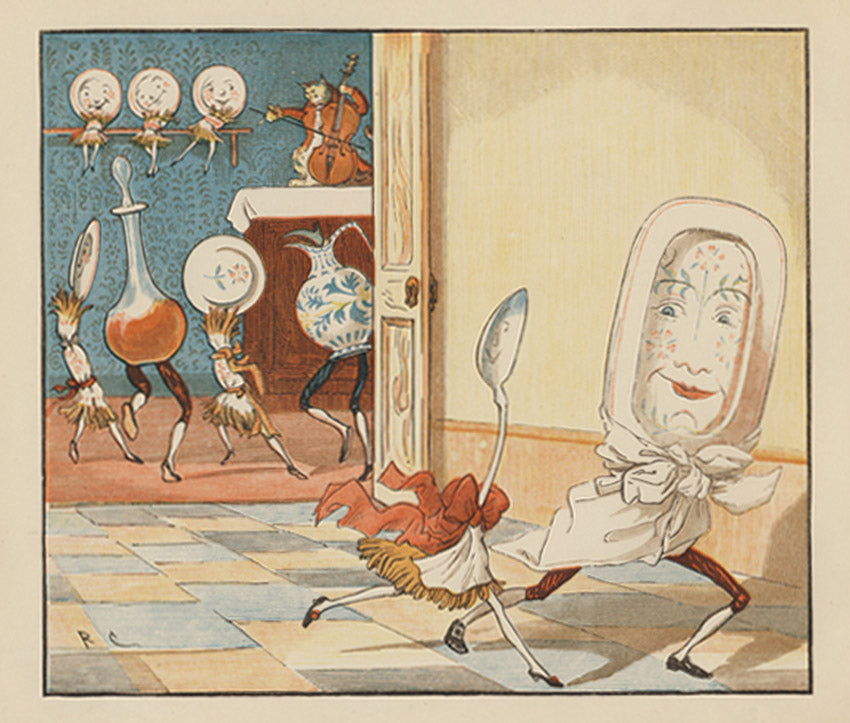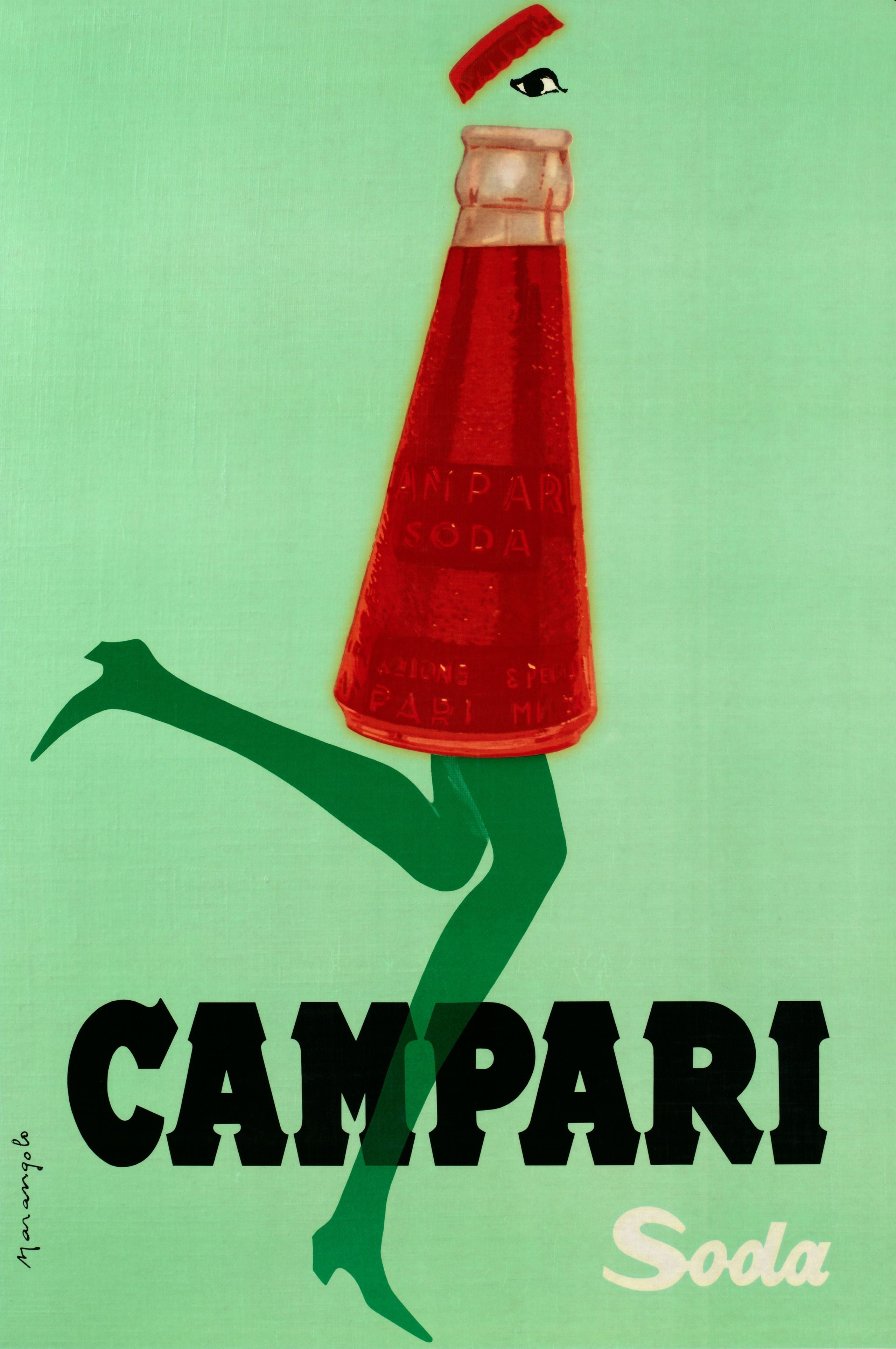Illustrators Born in March
March-born Kay Nielsen created this piece for his 1914 masterpiece book, East of the Sun and West of the Moon. We've adapted it into a greeting card with a blank interior—see it here!
See our entire Birthday Card Collection here!
Let's celebrate the creativity that entered the world in the month of March! From the whimsical worlds of Dr. Seuss and Howard Pyle to the enchanting illustrations of Errol Le Cain and Peter Newell, each artist brings their own unique style and has delighted generations. Get lost in the intricate illustrations of Kay Nielsen and Harry Clarke, or explore the timeless charm of Kate Greenaway and Randolph Caldecott. Discover the innovative paper engineering of Robert Sabuda and the playful creations of Wanda Gág, plus the avant-garde designs of Fortunato Depero. Let us tell you more about the lives of these influential artists!

We all know Dr. Seuss! Theodor Seuss Geisel (1904-1991) was an American author, illustrator, and cartoonist best known for his iconic children's books. His distinctive illustration style, characterized by whimsical characters and vibrant colors, captivated generations, especially since his books were often their first introduction to literature! Before achieving fame as a children's book creator, he worked as an illustrator for advertising campaigns, magazines, and political cartoons. His breakthrough came with publishing his first children's book, And to Think That I Saw It on Mulberry Street, in 1937. Dr. Seuss illustrated over 60 books throughout his career, including timeless classics such as The Cat in the Hat, Green Eggs and Ham, and How the Grinch Stole Christmas! His imaginative illustrations inspire creativity and joy in readers of all ages worldwide.
It's fitting that Dr. Seuss was born right before graduation season—his 1990 book, Oh, The Places You'll Go, is very popular this time of year!
Howard Pyle (1853–1911), often hailed as the "Father of American Illustration," significantly shaped the illustration landscape during the Golden Age of Illustration. Renowned for his vibrant and detailed works depicting fantasy, legend, and history, he not only established the Howard Pyle School of Illustration Art in Wilmington, Delaware, but also mentored and trained numerous aspiring artists at the Drexel Institute of Art, Science, and Industry. His teaching methods, emphasizing a solid narrative quality in illustration, were pivotal in elevating American illustration as a respected art form. Among his notable students were luminaries such as N.C. Wyeth, Sarah Stilwell Weber, and Jessie Willcox Smith, each achieving remarkable success in their artistic careers. He founded an artist colony, the Brandywine School, near the Brandywine River in Delaware, with its style and its students (and their subsequent students) sometimes referred to as being of the Brandywine School. Notably, he never accepted payment for his teaching services. Furthermore, his classes boasted a groundbreaking fifty percent female student enrollment—a remarkable ratio that positively influenced the landscape for successful working female artists. Additionally, he authored and illustrated captivating stories, with The Merry Adventures of Robin Hood (1883) standing out as a classic still in print today. An intriguing footnote to Pyle's legacy is that some say his illustrations of pirates inspire our modern stereotype of pirate dress!
This 1910 romantic painting by Howard Pyle, fittingly titled The Mermaid, was his very last painting and was left unfinished. His student, Frank Schoonover, finished it after his death. We've adapted it into both a greeting card and as an art print!
See our Howard Pyle Collection here!
Errol Le Cain (1941–1989) was a highly esteemed illustrator and animator renowned for his enchanting illustrations reflecting his multicultural background. Born in Singapore, raised mainly in India, and relocating to England as a teen, his work often showcased elements of Moorish symmetry, Indonesian shadow puppets, and Baroque fantasy, all infused with an emphasis on storytelling above all else. He began making movies early—his first animated short film, The Enchanted Mouse, when he was just 11! Upon moving to London, he embarked on a diverse career, contributing to various animation projects and designing sets for BBC television productions. However, in children's illustration, he truly made his mark, lending his talents to over 40 books, some of which he wrote himself. His exceptional contributions to children's literature earned him the prestigious Kate Greenaway Medal (read more about Kate Greenaway below!) for "distinguished illustration in a book for children."
Isn't this illustration by Errol Le Cain captivating? It's from the pages of his 1981 adaptation of the Brothers Grimm tale, The Twelve Dancing Princesses.
Peter Newell (1862–1924) was an American author and illustrator known for his innovative contributions to children's literature. He initially found success with his illustrations in renowned periodicals of his time. His subsequent books were groundbreaking, introducing innovative formats and storytelling techniques. Topsys and Turveys (1893) was a pioneering collection of poems and images that readers could read from upside-down or right-side up. The Hole Book (1908) featured a literal hole at the center of each page, ingeniously indicating the path of a mischievous creature throughout the story. Similarly, The Slant Book (1910) is shaped like a rhomboid and tells the humorous tale of a baby carriage careening down a hill. Beyond his works, Newell also illustrated the works of other authors, most notably Mark Twain. Given that he was a self-taught artist, his achievements are impressive!
The Naps of Polly Sleepyhead by Peter Newell were published in newspapers across America from February 1906 to September 1907. It was a wordless comic depicting a young girl and her nightmarish naps!
Peter Newell's art appears within our Weird & Wonderful Gift Book—see it here!
Robert Sabuda is an acclaimed American pop-up book artist and paper engineer renowned for his intricate and captivating books that bring stories to life in 3D! Born in 1965 in Michigan, he studied illustration at the Pratt Institute in New York City. His innovative approach to paper engineering and pop-up design quickly gained attention, leading to collaborations with renowned authors and publishers. He is best known for his elaborate pop-up adaptations of classic tales such as Alice's Adventures in Wonderland, The Wizard of Oz, and The Christmas Alphabet (his first). Sabuda's pop-up books are known for their meticulous detail, intricate mechanics, and enchanting storytelling, captivating readers of all ages. In 2003, the New York Times named him "indisputably the king of pop-ups."
This page from Robert Sabuda's 2003 adaptation of Lewis Carroll's Alice's Adventures in Wonderland showcases his amazing creativity.
Wanda Gág (1893-1946) was an American artist, author, and illustrator born in a German-speaking community in New Ulm, Minnesota. As the eldest of seven children, she shouldered early responsibilities after her father's death but graduated high school. Her illustrated story Robby Bobby in Mother Goose Land was published in a local newspaper while she was still a teenager. With scholarships and support from friends, she pursued formal art education in New York City and gained recognition for her work in newspapers, magazines, and decorative novelty boxes. Beyond her commercial art, she used her creativity to support progressive causes of her time. Her most renowned work, the children’s book Millions of Cats (1928), earned her lasting acclaim; the combination of hand-lettered text (by her brother, Howard) and expressive illustrations marked a departure from traditional children's literature. She illustrated numerous children's books throughout her career, winning a Newbery Honor and two Caldecott Honors in her lifetime and posthumously receiving The Museum of Illustration at the Society of Illustrators Original Art Lifetime Achievement Award.
Wanda Gág's Millions of Cats is the oldest American picture book still in print!
Kay Nielsen (1886–1957) was a Danish illustrator known for his exquisite illustrations of fairy tales and folklore. Born in Copenhagen, Nielsen studied art in Paris before starting his career as an illustrator. His early work garnered attention for its intricate detail and unique style, leading to commissions for various publications and projects. His illustrations often featured delicate lines, rich colors, and a dreamlike quality that captivated viewers. He gained international acclaim for his contributions to the illustration field, particularly his illustrations of fairy tales such as East of the Sun and West of the Moon (1914). He collaborated with Disney on many story sketches and illustrations, notably for Fantasia. His initial work stood out because he used a 4-color process, contrasting with the traditional 3-color process many of his contemporaries used. Unsurprisingly, given his parents' involvement in theater, he returned to set decoration and costume design throughout his career. Nielsen's timeless illustrations inspire artists and enchant audiences with their unparalleled beauty.
And they lived happily ever after... we've adapted this romantic Kay Nielsen image into a wedding greeting card!
See our Kay Nielsen Collection here!
Harry Clarke (1889–1931) was an Irish stained-glass artist, book illustrator, and leading Irish Arts and Crafts Movement figure. Born in Dublin, he was immersed in art from an early age, as his father was a church decorator and the founder of Joshua Clarke & Sons. This respected firm later added a stained glass division managed by Harry and his brother, Walter. His exceptional talent in stained glass design quickly earned him recognition, and he became known for his intricately detailed windows adorning churches across Ireland and England. He also ventured into book illustration, finding his niche in horror with two editions of Edgar Allan Poe’s Tales of Mystery and Imagination in 1919 and 1923. His distinct artistic style, characterized by stained glass-esque illustrations with bold and otherworldly details, set him apart in the field. In 1919, the Committee of the Irish National War Memorial commissioned him to illustrate Ireland's Memorial Records, an honor roll for the Irish who died during World War I. Clarke's unique blend of Art Deco, Art Nouveau, and Symbolism elements in his artwork cemented his legacy as one of Ireland's most renowned artists.
This appropriately spooky scene, titled Deep, Deep, and Forever, into some Ordinary and Nameless Grave, was created by Harry Clarke in 1919 for Edgar Allan Poe’s The Premature Burial story within Tales of Mystery and Imagination.
Kate Greenaway (1846–1901) was an English children's book illustrator and writer renowned for her charming and nostalgic depictions of children in the late 19th century. Born in Hoxton, London, she grew up in a creative environment with her mother, Elizabeth, a dressmaker and owner of a children's dress shop, and her father, John, an engraver for books and newspapers. At 12, Greenaway began studying various decorative arts mediums in night courses exclusively available to women. She applied her skills in the burgeoning greeting card industry, where her delicate watercolor illustrations gained popularity. Her success led to her famous book, Under the Window, in 1879, featuring verses accompanied by illustrated children in elaborate, old-fashioned costumes in pastoral scenes. This work significantly influenced children's literature and fashion, impacting clothing and interior design trends during the late Victorian era. The Kate Greenaway Medal, established in her honor in 1955, is awarded annually to a notable illustrator and is very prestigious in the industry!
Kate Greenaway's children were dressed in her versions of late 18th-century and Regency fashions: smock-frocks and skeleton suits for boys, high-waisted pinafores, dresses with mobcaps, and straw bonnets for girls. A whole generation of fashionable mothers embraced this nostalgic fashion for their children! This is a page from within her popular Under the Window.
Randolph Caldecott (1846–1886) was an English artist and illustrator whose remarkable talent and innovative techniques revolutionized children's book illustration! Born in Chester, England, his artistic career began at 15 when his drawing of a fire at the Queen Hotel, Chester, was published in the Illustrated London News. Despite initially working in banking, he pursued his passion for art by taking night courses. Eventually, he fully committed to art as a career, finding quick success as a magazine illustrator and making friends among London's artistic and literary circles. In 1878, he received a commission to illustrate two Christmas books, The House that Jack Built and The Diverting History of John Gilpin, both of which were instant successes. Thus began a prolific period where he produced two Christmas books each year for the next eight years. His illustrations often depicted scenes from rural life, humorous situations, and playful animals using innovative techniques, including sequential pictures and integrated text and images. His work significantly impacted the development of children's literature and illustration; the prestigious Caldecott Medal, named in his honor, is awarded annually by the American Library Association for outstanding children's book illustration.
Check out the implied motion in this classic nursery rhyme scene by Randolph Caldecott of the dish running away with the spoon! Maurice Sendak said of the remarkable artist: "Caldecott's work heralds the beginning of the modern picture book. He devised an ingenious juxtaposition of picture and word, a counterpoint that never happened before. Words are left out—but the picture says it. Pictures are left out—but the word says it."
See our Caldecott Award Winners Collection featuring artists within our catalog that have won the prestigious award!
Fortunato Depero (1892–1960) was an Italian futurist artist, writer, and designer known for his groundbreaking contributions to the Futurist movement and avant-garde design. Born in Fondo, Italy, he began his artistic career as an apprentice to a marble worker in Rovereto. A trip to Florence in 1913 exposed him to the burgeoning avant-garde art scene, inspiring him to move to Rome to join it. He quickly gained recognition for his dynamic and innovative approach to art, embracing Futurist ideals of speed, technology, and modernity. His diverse work in many mediums reflected his fascination with the intersection of art and technology. In 1919, he co-founded the Futurist Reconstruction of the Universe movement with fellow artist Giacomo Balla, advocating for a “total fusion to reconstruct the universe making it more joyful...by a complete re-creation.” His most famous work, Depero Futurista (1927), commonly known as The Bolted Book, is a groundbreaking example of avant-garde book design, featuring bold typography, vibrant colors, and innovative binding techniques. Throughout his career, Depero's visionary approach to art and design paved the way for future generations of artists and designers, establishing him as a pioneering figure in the history of 20th-century avant-garde art.
One of the most enduring of Fortunato Depero's creations is his design of the iconic Campari Soda bottle in 1932. It was the first ready-to-use and pre-mixed drink ever and is still sold today! Here is the unique bottle as featured in a 1968 ad made by Franz Marangolo.
Thank you for joining us in honoring the artistic legacies of these talented artists born this month! If you're celebrating a March birthday, be sure to explore Laughing Elephant's extensive collection of over 200 birthday cards, specially crafted to add a touch of magic to your celebrations!

